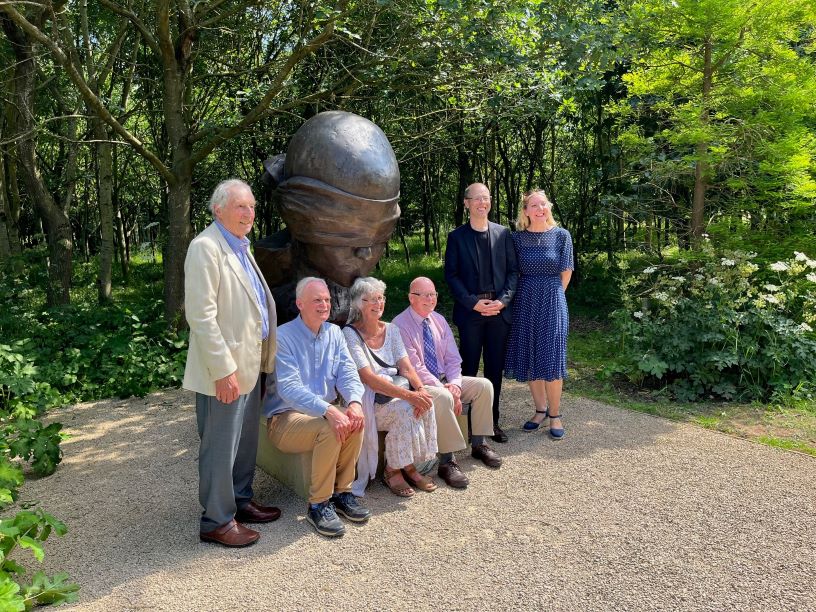Pity of War sculpture unveiled at National Memorial Arboretum
As over 100 conflicts rage around the world, and the death toll in Gaza and Israel rises to more than 35,000, the first memorial to civilian casualties of war has been unveiled.

At the unveiling on 24 June sculptor Peter Walker said: “The Pity of War memorial will be a place…where we hold our brothers and sisters around the world – no matter what nationality, race, faith or gender – in our thoughts."
[QUOTE-START]
The so often untold and unheard story
- Peter Walker
[QUOTE-END]
The idea for the Pity of War sculpture, unveiled at the National Memorial Arboretum (NMA) in Staffordshire, originated with Quaker Joyce Gee.
Visiting the NMA, Gee, from Clun Valley Quaker meeting in Herefordshire, noted that although there were scores of memorials to service personnel, there were none to the millions of civilian casualties of war.
Sculptor Walker had been thinking along the same lines and when staff at the NMA put him in touch with Joyce work on the project began.
Quakers Jan Arriens and Roger Bartlett established the ecumenical Pity of War Charitable Trust (PoWCT) to oversee the project and raise funds.
By the time the project came to fruition 11 years later, Joyce had died. But two of her sons and their families were present at the unveiling, attended by over 60 people.
The ecumenical event included speeches by Kit Byatt and Jeff Beatty, PoWCT trustees, and Anglican Bishop Michael of Lichfield.
Trustee Linda Hale read a poem by ten-year-old Yemeni, Sawsan Alshamiri, entitled 'Where Did Peace Go?' and local schoolchildren sang.
Walker described the creative process that led to the 2m-high bronze sculpture that represented the “so often untold and unheard story" of civilian deaths in war.
Finally, the Lord-Lieutenant of Staffordshire Ian Dudson – aided by the schoolchildren – pulled the shroud from the sculpture, revealing a child, eyes covered by a blindfold.
The sculpture is on permanent display at the National Memorial Arboretum near Lichfield.
Small bronze copies of the statue can be found at Chester, Sheffield and Liverpool cathedrals and other venues including UK embassies in Paris and the UAE.